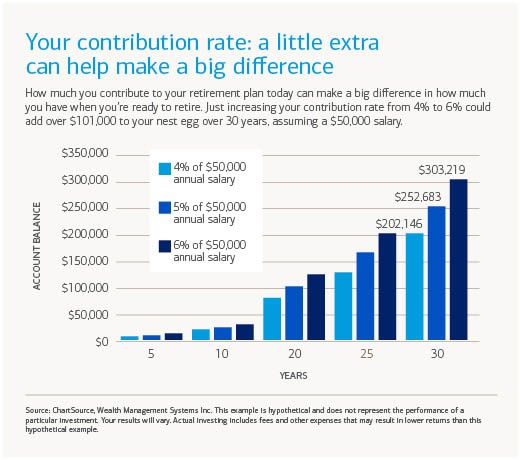TaxDeferred Savings v Savings Accounts Easy Steps to Boost Your Retirement
Post on: 23 Июнь, 2015 No Comment

Think all retirement accounts are equal? If you do, you could be losing out big on your investments.
Making the mistake of ignoring the tax status of your retirement accounts and not allocating your savings to the right accounts can make a big difference in the future value of your investments, especially over the long term.
Tax-Deferred vs. Taxable: A Costly Example
Take two investment accounts with an identical asset allocation and the same total balance ($50,000). One investment account is a fully-taxable brokerage account let’s assume a tax rate of 25% per year on returns from this investment. The other investment is a tax-deferred investment account. This investment grows tax-free, and taxes are only payable once distributions are taken in retirement.
How big of a difference do these tax structures make? Lets test it with a taxable vs. tax-deferred investment calculator:
Financial Calculator.
Assuming an 8% annual rate of return and a 25-year investment period, the taxable investment is worth about $214,000. However, the tax-deferred investment grows to almost $330,000 because taxes aren’t payable as the investment returns are compounded.
Dont forget: taxes will need to be paid when distributions from the tax-deferred account are eventually made. But even after taxes, the investment still yields $247,500 after paying about $82,500 in taxes (assuming a tax rate of 25%). Thats $33,500 (nearly 16%) more than the taxable account!
Even better news: your tax rate on withdrawals depends on your income when you take money out of your retirement account. If your income is lower in retirement, you might pay an even lower tax rate on the withdrawals from the tax-deferred account. If your tax rate is only 10% in retirement, your investment will be worth $297,000 after taxes and youll have $83,000 (about 39%) more than the taxable investment.
Tax-Deferred vs. Tax-Exempt?
Now that youve seen the impact of being tax savvy when it comes to your retirement accounts,it’s worth learning more about your retirement account options so you can make the right choice for your individual circumstances.
Retirement accounts fall under three general tax structures: fully-taxable, tax-deferred, and tax-exempt.
Fully-taxable accounts are those that arent special retirement accounts like a 401k or IRA. Theyre funded with after-tax dollars, and returns from these investments are taxable in the year theyre received. These earnings are taxed as ordinary income (except in cases where the long-term capital gains rate applies). Even if you dont sell investments held in your taxable account, you may still owe taxes on dividends, interest, or on sale of stocks by a fund manager.
Tax-deferred accounts. which include traditional 401ks and IRAs, are funded with pre-tax dollars. Investments are allowed to grow tax-free until distributions are made from these accounts. The main benefit is the tax-deferred compounding of investments thats highlighted above.
Tax-exempt accounts. like Roth IRAs, allow your money to grow and typically be withdrawn tax-free. The disadvantage is youll have to fund your accounts with after-tax dollars. But as long as you follow the rules, you wont ever have to pay taxes on this type of account.
Special retirement accounts do have more rules than plain, taxable accounts. To contribute to a Roth IRA in 2013, your income must be below $127,000 if filing as a single person or $188,000 if you and your spouse file a joint return. If you make more than this, a 401(k) is still available, as its not income restricted.
Both tax-deferred and tax-exempt accounts typically have contribution limits for each tax year. For 2013, total contributions to IRAs is capped at $5,500 ($6,500 if age 50 or older). 401k and similar plans are limited to $17,500 for 2013 ($23,000 if age 50 or older).
Choosing the Right Retirement Account
Before you decide which accounts to save in, youll need to consider other important factors and limitations. Some important ones include:
- Employee match. If your employer matches 401(k) contributions, contributing up to the full match almost always makes sense. This is basically free money and is like receiving a 100% return on your investment from day one.
- Time horizon. If you have decades until retirement, Roth IRAs are often the better option. If youre early in your career with a lower salary, your income tax rate is likely low than it could be later in your career.
- Tax rate expectations. From the last bullet, the opposite can also be true. If your tax rate is high now but you expect it to be lower when youre ready to withdraw retirement funds, a traditional IRA or 401k may result in less tax owed.
- Flexibility. Taxable accounts typically dont have any restrictions or penalties for withdrawing your money at any time. For retirement accounts, you may be subject to a 10 percent penalty for withdrawing funds before age 59 1/2.
- Tax diversification. While you can calculate returns based on todays income tax rates, we dont know what tax rates will be in the future. With this uncertainty, having a mix of investments that are tax-deferred and tax-exempt on withdrawal may be a prudent strategy.
Although your decision should be based on your specific circumstances, it makes sense in most circumstances to invest the maximum amount you can in all your possible tax advantaged accounts before putting money to work in other investment accounts. The tax benefits will make a significant difference to your retirement nest egg.
Do you pay attention to the tax structure of your accounts? Tell us what you think.
To get custom-tailored investment advice that weighs your account tax structure, visit Jemstep.com.














